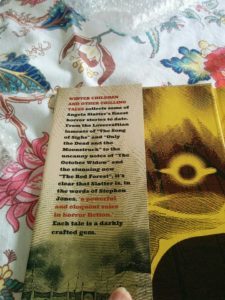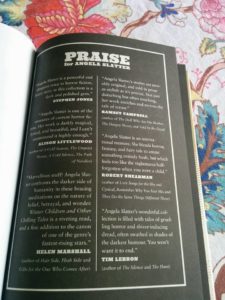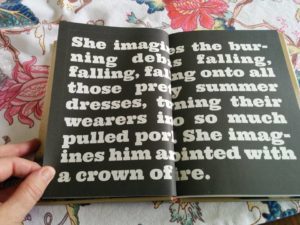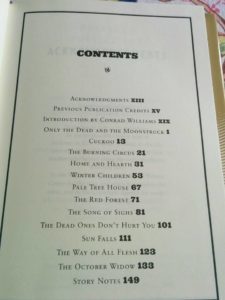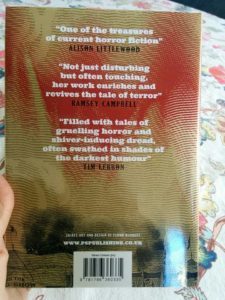Angela Slatter's Blog, page 46
February 19, 2017
A New Suzanne J. Willis Story!
 Yes! This is an event!
Yes! This is an event!
Darling Suze Willis (one of my Clarion South 2009 classmates) has a glorious new story out, “A Nightingale’s Map of the City”, with all her trademark beautiful prose.
The white stone buildings of the city gleam like scattered pearls, their peaks and towers reaching for the vertiginous blue of the sky. Atop the spires and turrets and minarets, domes and curlicues of gold-leaf sparkle, making the city seem dusted with slow-burning embers. The ghost of the giant Gustav, the city’s architect and creator, walks cobbled alleyways that are carpeted in moss, skimming past the tiny ferns growing from arched doorways. It is the city he built for his flame-haired Julietta. His place of torment since the day she left.
Everywhere – everywhere – are monuments to Julietta. Ivy-covered statues, beaten copper friezes, emerald-roofed cenotaphs carved with elegiac verses. As though all of them together might be woven into a spell under the splinter-moon to bring her back again. Julietta left the city long ago, much longer than Gustav cares to remember. So he holds the city close like a well-worn photograph, folded and re-folded and disintegrating with time. Without it, he’s scared that he wouldn’t remember her face, her voice, the touch of her skin.
Read it online here.
February 16, 2017
Murder in the Mail!
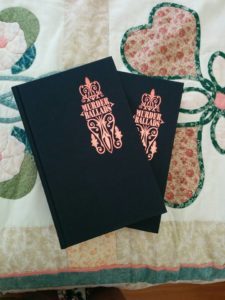 My contributor copies of Murder Ballads have arrived in the mail! So much excitement! This is such a gorgeous book, with a ToC filled with authors I’m delighted to sit next to! Thanks, Egaeus Press – these are limited editions and selling fast.
My contributor copies of Murder Ballads have arrived in the mail! So much excitement! This is such a gorgeous book, with a ToC filled with authors I’m delighted to sit next to! Thanks, Egaeus Press – these are limited editions and selling fast.
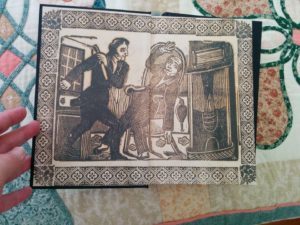
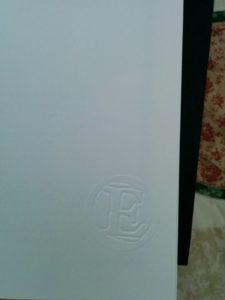
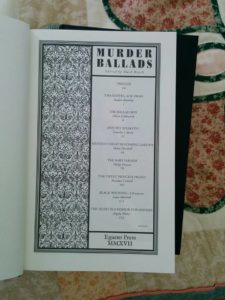
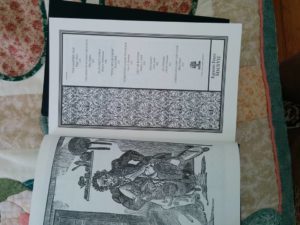
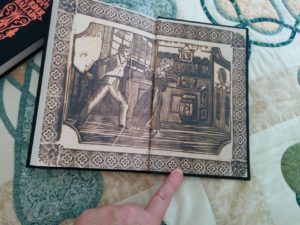
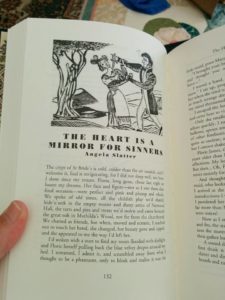
US & Canada Goodreads Giveaway
 And for the American and Canadian folks keen to have a copy of Winter Children and Other Chilling Tales, go here to enter the Goodreads Giveaway.
And for the American and Canadian folks keen to have a copy of Winter Children and Other Chilling Tales, go here to enter the Goodreads Giveaway.
Australian Goodreads Giveaway
 Okay, for anyone interested in the Australian Goodreads Giveaway of Winter Children and Other Chilling Tales, go here to enter.
Okay, for anyone interested in the Australian Goodreads Giveaway of Winter Children and Other Chilling Tales, go here to enter.
Patreon

Banner courtesy of Kathleen Jennings
Well, I’ve finally bitten the bullet and set up a Patreon page – ably assisted by Kathleen Jennings and Peter M. Ball who managed not to grit their teeth for much of this process.
If you’re interested in checking out the rewards at various levels, please head over to here.
February 15, 2017
Ditmars
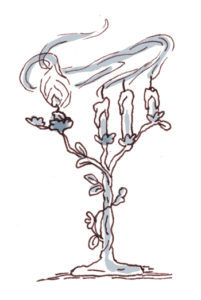 So, just in case you were wondering, my eligible Ditmar works:
So, just in case you were wondering, my eligible Ditmar works:
Short Stories
“Finnegan’s Field”, at Tor.com, Ellen Datlow (ed.), January 2016.
“Change Management”, in Dead Letters, Conrad Williams (ed.), Titan Books, April 2016.
“Tin Soldier”, Dark Discoveries Magazine, Aaron J. French (ed.) Issue #35, Summer 2016, JournalStone Publishing, July 2016.
“Neither Time Nor Tears”, Dreaming in the Dark, Jack Dann (ed.), PS Publishing, 2016.
Collections
Winter Children and Other Chilling Tales, PS Publishing, November 2016.
A Feast of Sorrows: Stories, Prime Books, October 2016.
Novels
Vigil, Jo Fletcher Books, July 2016.
February 14, 2017
Between Stillness and the Dance: Nin Harris
 Nin Harris is an author, poet, and Gothic scholar who exists in a perpetual state of unheimlich. Nin writes Gothic fiction, cyberpunk, nerdcore post-apocalyptic fiction, planetary romances and various other forms of hyphenated weird fiction. Nin’s publishing credits include: Clarkesworld, Strange Horizons, and Lightspeed. Nin is currently working on “Watermyth”, the first novel of the Watermaidens Trilogy.
Nin Harris is an author, poet, and Gothic scholar who exists in a perpetual state of unheimlich. Nin writes Gothic fiction, cyberpunk, nerdcore post-apocalyptic fiction, planetary romances and various other forms of hyphenated weird fiction. Nin’s publishing credits include: Clarkesworld, Strange Horizons, and Lightspeed. Nin is currently working on “Watermyth”, the first novel of the Watermaidens Trilogy.
1. First of all, what do new readers need to know about Nin Harris?
I am a Malaysian author and a poet who has been published in Clarkesworld, Strange Horizons, Lightspeed, Giganotosaurus and various other publications. I’m working on a novel. I’m always working on a novel, it seems.
My fiction straddles science fiction, fantasy, literary fiction, but all have Gothic or classical underpinnings, and I work mythic, folkloric and classical motifs into most of them, albeit grounded by lived experiences and philosophical underpinnings. I am also of hybrid parentage, with Sri Lankan Tamil, Fuzhou Chinese, Javanese, Boyanese and Middle Eastern blood. People keep asking me “Which do you choose?” I think the answer is something most mixed-race kids shake their head at, and for me, what I write is often a process of discovery. I have written stories that come from lived experience, from epics, from the bits of culture I’ve osmosed from different parts of my heritages. I think it makes me hard to pin down, but I’m okay with that.
2. Which books, either fictional or otherwise, would you say taught you the most about writing? 
I’ve been a voracious reader from an extremely early age as one of those pesky prodigy type kids (who somehow wind up sheepish underachievers!) so I have read entirely too many books for me to pinpoint with any accuracy. Here are some:
I’ve been a greedy consumer of fairytales since I was very young. When I was around 4 years old I was staging little plays based on fairytales, starring my stuffed toys and dolls. When I was in the United Kingdom as a kid (we stayed for two years in Edinburgh and later West Kensington), I tore through Andrew Lang’s books, along with Grimm’s fairytales and other compilations. I’d say the blame lies mostly with them. I’ve pretty much osmosed the narrative arcs, the patterns of folklore and fairytales.
Hikayat Hang Tuah, and SejarahMelayu are two classical Malay epics/romances that also influence a lot of my writing – they taught me to reprogram my brain to think of storytelling in terms of two languages and two separate modalities.
When I was a teenager, I read Kew Gardens by Virginia Woolf. It broke my mind. It spoke to my synaesthesia. It showed me what could be done with language. It changed the way I wrote. Reading To The Lighthouse, Orlando, and Mrs. Dalloway widened that fracture in my mind. I never recovered!
Another book that broke my mind as a teen and spoke to my synaesthesia so acutely that I nearly threw up on my first 2 tries at reading it: James Joyce’s Portrait of the Artist As a Young Man. Once I overcame that, I reread the book three times successively. I owe a great debt to the impressionist authors.
I argue furiously with John Gardner’s books on the craft but my go-to writing book for myself and my creative writing students is still The Art of Fiction.
I am a literary scholar – and I learn a lot from the books I study and teach. I would say that some of the finest literary craftsmanship can be found in books by Salman Rushdie, Chimamanda Ngozi Adichie, Arundhati Roy, Gabriel Garcia Marquez, Kazuo Ishiguro (I was very taken with The Unconsoled and how he slipped between realism and the fantastic there).
I’ve always maintained that one of the best teachers of creative writing I’ve had is Angela Carter. I gave three years of my life to studying her fiction for my M.A. dissertation and most of that was short fiction. She is the master of narration, nonpareil.
Another teacher: Patricia McKillip’s books. I want to be as excellent a writer when I grow up.
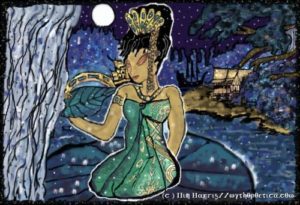 3. What drove you to set up Truancy and Delinquent Spice?
3. What drove you to set up Truancy and Delinquent Spice?
To be honest, I fell into it almost entirely by accident! Erzebet Yellowboy recruited me for Cabinet des Fees and asked me to figure out what rolling content we could slot in-between issues of Scheherezade’s Bequest. I wound out bouncing several hypertext fiction ideas off her (I’ve been playing around with various hypertext projects since 1997), then somehow wound up doing an executive summary and outline for Demeter’s Spicebox. Sometime in 2013, after discussing with her, I decided to strike off on my own and Delinquent’s Spice was created to replace Demeter’s Spicebox. Ironically, I created Truancy to be rolling content in-between issues of DS, but now it’s its own thing – a strange monster that I bring out twice a year.
4. How do you balance your creative life with your academic life?
Very awkwardly, with lots of coffee and periods of acute insomnia.
I used to have a problem with this, during the early days and when I was a PhD student. I’ve managed to find a happy balance somewhere along the line in that I’ve learned to switch between the academic writing brain and the fiction writing brain. More importantly, I’ve learned to let both separate states of mind help each other. It wasn’t easy but it’s doable. I’d be working on an article and an idea about how a certain plot is put together sheds a light on a problem I’m having with a story. When I’m working on a story, I’m suddenly struck by an idea about the process that helps with an article. And so it goes…
5. When you’re in the mood to read, who do you choose?
I read all the time, because it’s my job, and my pleasure. Sometimes I need something fluffy (romances), others, I can only be soothed by philosophy or theoretical physics, I also reread copiously Gothic classics, and my SFF favourites. Right now I’m reading an array of books: George Macdonald’s Lilith, Kazuo Ishiguro’s The Buried Giant, several translations of Malay Hikayats, and Iain M. Banks’s The Hydrogen Sonata. It’s pretty much like this all the time with me!
6. What do you love about fairy tales? 
They take me back to a familiar land where trees speak and animals can show you wisdom, and if you undertake all tasks on the road, you will find (sometimes) your happy ending. But I also like dark fairytales – the gristly stuff that frightened me as a kid intrigue me these days because of what they reveal about our nightmares and the human condition.
7. Can you remember the first story you read that made you think “I want to be a writer”?
I was around 7 or 8 years old when I decided I wanted to be a writer, after running through a host of possibilities in my head (a farmer’s wife – before I actually realized what I wanted was to have a farm and be the farmer, a princess, a composer, an orchestra conductor, a ballerina). At some point, I wanted to be a secretary so I could play with typewriters – and then I realized what I really wanted to do was write about all of those characters going off on adventures. I was reading a lot of classical Occidental literary texts. Shakespeare, Dickens, Louisa May Alcott but also heaps of legends and myths – Hang Tuah stories etc. I was also devouring all of Enid Blyton’s Famous Five books AND my father’s medical books. So probably all of them. I don’t know! I was pretty much reading everything!
8. What projects are you working on right now?
Watermyth– the first novel in my Watermaidens Trilogy, a fistful of short stories, a historical fantasy novella set during the time of the Malaccan Sultanate. As an academic, I’m co-writing and editing a book on contemporary Malaysian fiction, and writing another fistful of academic articles related to that grant-funded project.
 9. You get to invite five fictional characters to dinner: what’s your guest list look like?
9. You get to invite five fictional characters to dinner: what’s your guest list look like?
Schmendrick, from Peter S Beagle’s The Last Unicorn, Tenar, from Ursula K. LeGuin’sEarthsea Quartet, Totoro (I mean, of course!), Aya, from Helen Oyeyemi’s The Opposite House, and Jill, from Katherine Kerr’s Deverry books.
10. What’s next for Nin Harris?
After I finish revising Watermyth, I’m sending it off to try its luck with various agents. While that’s happening, I’m going to start drafting Rosemirror, the second book in the trilogy. Apart from that, I will continue to be a reclusive, obscure, partially mild-mannered Gothic literary academic and author who throws short stories at various publications on a regular basis.
February 13, 2017
The Year’s Best Dark Fantasy & Horror: 2017
[image error]And Paula Guran’s The Year’s Best Dark Fantasy & Horror: 2017 ToC has been released. Happy happy joy joy to share space with these wonderful writers (and also for name on cover – rare and never gets old).
Contents (in alphabetical order by author’s last name)
“Lullaby for a Lost World,” Aliette de Bodard (Tor.com 06/16)
“Our Talons Can Crush Galaxies,” Brooke Bolander (Uncanny #13)
“Wish You Were Here,” Nadia Bulkin (Nightmare # 49)
“A Dying of the Light,” Rachel Caine (The Gods of H.P. Lovecraft)
“Season of Glass and Iron,” Amal El-Mohtar (The Starlit Wood: New Fairy Tales)
“Grave Goods,” Gemma Files (Autumn Cthulhu)
“The Blameless,”Jeffrey Ford (The Natural History of Hell)
“As Cymbals Clash,” Cate Gardner (The Dark #19)
“The Iron Man,” Max Gladstone (Grimm Future)
“Surfacing,” Lisa L. Hannett (Postscripts 36/37: The Dragons of the Night)
“Mommy’s Little Man,” Brian Hodge (DarkFuse, October)
“The Sound of Salt and Sea,” Kat Howard (Uncanny #10)
“Red Dirt Witch,” N. K. Jemisin (Fantasy #60)
“Birdfather,” Stephen Graham Jones (Black Static #51)
“The Games We Play,” Cassandra Khaw (Clockwork Phoenix 5)
“The Line Between the Devil’s Teeth (Murder Ballad No. Ten),” Caitlin Kiernan (Sirenia Digest #130)
“Postcards from Natalie,” Carrie Laben (The Dark #14)
“The Finest, Fullest Flowering,” Marc Laidlaw (Nightmare #45)
The Ballad of Black Tom, Victor LaValle (Tor.com)
“Meet Me at the Frost Fair,” Alison Littlewood (A Midwinter Entertainment)
“Bright Crown of Joy,” Livia Llewellyn (Children of Lovecraft)
“The Jaws That Bite, The Claws That Catch,” Seanan McGuire (Lightspeed #72)
“My Body, Herself,” Carmen Maria Machado (Uncanny #12)
“Spinning Silver,” Naomi Novik (The Starlit Wood: New Fairy Tales)
“Whose Drowned Face Sleeps,” An Owomoyela & Rachael Swirsky (Nightmare # 46/What the #@&% Is That?)
“Grave Goods,” Priya Sharma (Albedo One #6)
“The Rime of the Cosmic Mariner,” John Shirley (Lovecraft Alive!)
“The Red Forest,” Angela Slatter (Winter Children and Other Chilling Tales)
“Photograph,” Steve Rasnic Tem (Out of the Dark)
“The Future is Blue,” Catherynne M. Valente (Drowned Worlds)
‘‘October Film Haunt: Under the House’’, Michael Wehunt (Greener Pastures)
“Only Their Shining Beauty Was Left,” Fran Wilde (Shimmer 13)
“When the Stitches Come Undone,” A.C. Wise (Children of Lovecraft)
“A Fist of Permutations in Lightning and Wildflowers,” Alyssa Wong (Tor.com 03/16)
“An Ocean the Color of Bruises,” Isabel Yap (Uncanny #11)
“Fairy Tales are for White People,” Melissa Yuan-Innes (Fireside Magazine Issue 30)
“Braid of Days and Wake of Nights,” E. Lily Yu (F&SF, Jan-Feb)
February 11, 2017
MURDER BALLADS. Now available to pre-order.
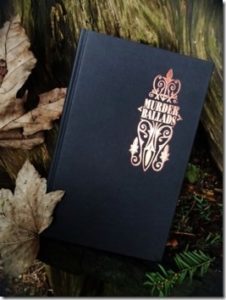 Check out this beauty!
Check out this beauty!
A collection of seventeen dark tales & novellas, in which some of today’s finest weird story writers provide previously unpublished work inspired by traditional murder ballads. The results are sometimes enigmatic, sometimes witty, sometimes desperately grim; just like the songs they often appear to belong outside — either before or after — recorded time, in some malleable epoch of blood-drenched mythology. They channel not only these ballads, but also that certain brand of outmoded publication which once revelled so joyfully in all manner of luridness; publications such as The Newgate Calendar, The Illustrated Police News and of course the Victorian Penny Dreadful.
It is sumptuously illustrated with reclaimed images from these glorious sources. 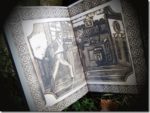
The full contents are as follows….
Prelude
Twa Sisters, Ane Swan by Avalon Brantley
The Ballad Box by Alison Littlewood
And Yet Speaketh by Timothy J. Jarvis
Heaven’s Nightblooming Garden by Helen Marshall
The Baby Farmer by Philip Fracassi
The Sweet Princess Prized by Brendan Connell
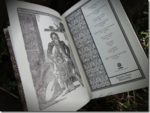 Black Wedding: A Footnote by Louis Marvick
Black Wedding: A Footnote by Louis Marvick
The Heart is a Mirror for Sinners by Angela Slatter
The Vampyre Trap by Reggie Oliver
The Kink of Human Mildness by Rhys Hughes
In Scarlet Town by Rosanne Rabinowitz
“We’ll Never Know” by Daniel Mills
Something Close to Grace by Lisa L. Hannett
Out of Bounds by Stephen J. Clark
Old Maid by Colin Insole
os cithara by Charles Schneider 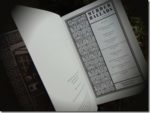
Through Flame and Fume by Albert Power
Edited by Mark Beech, the book has 385 pages; is a lithographically printed, sewn hardback with colour endpapers. It is limited to just 375 copies.
It can be pre-ordered HERE for £35.00, inclusive of postage worldwide.
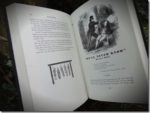 Ordered copies will be despatched on, or slightly before 20th Feb 2017.
Ordered copies will be despatched on, or slightly before 20th Feb 2017.
February 8, 2017
In the mail …
This beautiful thing arrived!!!
Just gorgeous – thank you, lovely PS Publishing and blurbifiers. *happy dance of the author*
I’ve set up two Goodreads giveaways one for the US and Canada, and one for Australia (UK, you’re on your own as it’s easy for y’all to find a copy there! But it doesn’t mean I don’t love you.). They will go live on 16 February, so be patient.
But if you simply cannot wait or don’t want to risk missing out – this is a limited edition run of 200 and over half of that has sold already – then go here.


